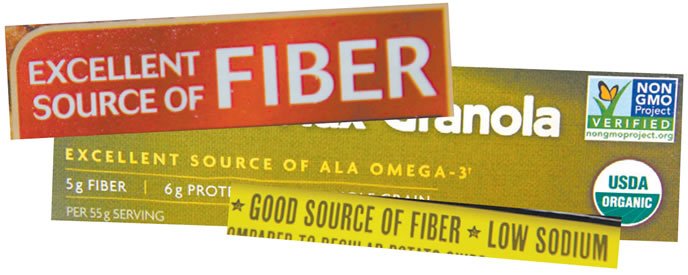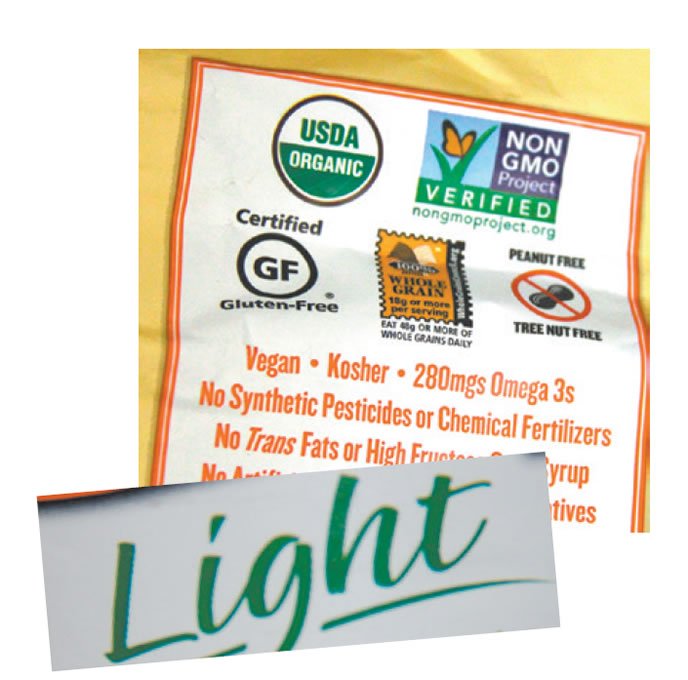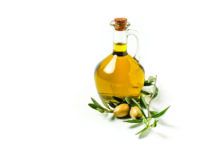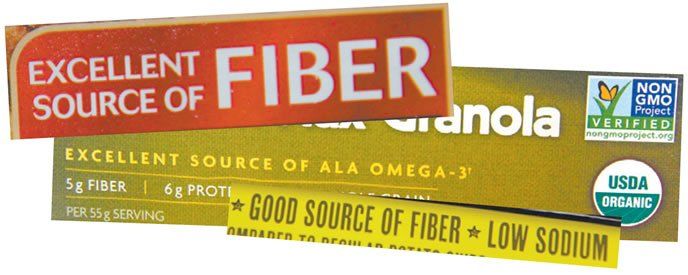

A trip to the supermarket can feel like running a gauntlet of buzzwords. This product promises it’s “reduced sodium,” while that one is “natural” and “gluten-free.” Is a food “made with extra fiber” better than “excellent source of fiber,” or vice versa? Just how low in calories does a food have to be to boast that it’s “low-calorie”—and should you pick that label over one that’s “lower calorie” or “light”?
“It is a whole language unto itself and unfortunately most of us get little training in reading or speaking it,” says Alice H. Lichtenstein, DSc, director of Tufts’ HNRCA Cardiovascular Nutrition Laboratory. “Although meant to be helpful, it is not always intuitive. It is worth taking the time to understand the terms.”
The US Food and Drug Administration recently proposed a sweeping makeover of the Nutrition Facts labels that detail how many calories and how much of various nutrients a product contains per serving. But that familiar label is only the tip of an iceberg of regulations and labeling language administered by the FDA and the US Department of Agriculture. When referring to nutrients, everything from the meaning of “free” to “excellent” is spelled out in government regulations. Unless you understand a few essential facts about those rules, however, the resulting product promises can be useless at best or outright misleading at worst.
AVOIDANCE STRATEGIES: For starters, it helps to break down which agency regulates what. In general, the FDA oversees labeling of packaged foods and seafood, while the USDA governs fresh produce, meat, poultry and dairy foods. But any product, including packaged goods, that claims to be “organic” must meet standards set by the USDA. And jurisdiction for some foods depends on how they’re sold: The FDA regulates eggs in the shell, while dried, frozen and liquid eggs (but not imitation egg products) fall under the USDA’s purview.
Broadly speaking, the FDA allows four types of special labels:
– Nutrient content claims
– Health claims
– Qualified health claims
– Structure/function claims.
We’ve looked at the two types of health claims and the related structure/function claims in previous Special Reports. Although the regulatory hoops required to make such a claim can be convoluted, the actual claims are pretty straightforward, such as: “Supportive but not conclusive research shows that eating 1.5 ounces per day of walnuts, as part of a low saturated fat and low cholesterol diet and not resulting in increased caloric intake, may reduce the risk of coronary heart disease.”
Much more common—and less obvious in their meaning—are “nutrient content claims,” which we’ll mostly focus on in this Special Supplement. You can recognize such claims by the use of a few key terms or approved synonyms. For nutrients like sodium or saturated fat that consumers might be trying to avoid, these are:
– Free (or “zero,” “no,” “without,” “negligible source of,” “dietarily insignificant source of”)
– Low (or “little,” “few,” “contains a small amount of,” “low source of”)
– Reduced or Less (or “lower,” “fewer”)—Note that these are relative terms, describing a modification to a food’s ordinary content.
The exact definitions of these terms, however, depends on the nutrient. Each is also defined based on “Reference Amount Customarily Consumed” (RACC)—generally, one serving, though the RACC may not be identical to the “serving” listed on the Nutrition Facts panel. Whenever we refer to “serving” here, we mean specifically the RACC.


Here are the primary guidelines set by the FDA for these nutrients you might be seeking to avoid at the supermarket:
– Calories — A product must contain fewer than 5 calories per serving to be labeled “calorie free” or “zero calorie” and no more than 40 calories to be “low calorie” (120 for meals and main dishes). “Reduced” calorie foods contain 25% fewer calories per serving than ordinary such foods, while “light” or “lite” versions must also be lower in fat, although the absolute degree of reduction is not specified.
-Total fat — “Fat-free” products can contain no ingredients that are fats and no more than 0.5 gram of fat per serving. The maximum for “low-fat” foods is 3 grams; meals and main dishes must also derive no more than 30% of calories from fat. “Reduced-fat” means at least 25% less fat than in similar, non-reduced fat products. (Keep in mind that nutrition experts advise concentrating on avoiding saturated and trans fats, not fats in general, so don’t be overly swayed by lower total fat claims.)
– Saturated fat — The same 0.5-gram rule applies for “free” products, but the limit for “low” saturated-fat foods is 1 gram per serving (as well as less than 10% of calories from saturated fat for meals and main dishes). “Reduced” means 25% less saturated fat.
–Trans fat — The FDA has proposed that partially hydrogenated oils (PHOs), the primary dietary source of artificial trans fat in processed foods, be ruled no longer “generally recognized as safe.” Under current FDA rules, foods can have up to 0.5 gram of trans fats per serving and still be labeled “free” or “zero” trans fats. Check the ingredients list for “partially hydrogenated oils” to be sure.
– Cholesterol — Per serving limits are 2 milligrams for “free” and 20 milligrams for “low,” and “reduced” means 25% less than originally present. (As explained in our May newsletter, however, experts now say most people don’t need to worry about dietary cholesterol—which is different from the cholesterol in your blood—within the context of levels currently consumed.)
– Sodium — “Sodium free” or “salt free” don’t exactly mean zero sodium; those terms mean less than 5 milligrams of sodium per serving. “Lower” means 140 milligrams or less of sodium per serving. There’s also a rule for “very low sodium”: 35 milligrams or less per serving. “Reduced” sodium means 25% less than regular such foods.
– Sugars — “Sugar free” products contain less than 0.5 gram of sugars per serving and no ingredient generally considered a sugar, such as sucrose, corn syrup, honey, high fructose corn syrup, fruit juice concentrates and dextrose. The term “low sugar” is not defined and may not be used. “Reduced” means 25% less sugar than originally present. “No added sugars” or “without added sugars” may be used if no sugar was added in processing—but these terms don’t mean “sugar free.” Other factual statements allowed are “unsweetened” and “no added sugars.” Note that “sugar” does not include sugar alcohols, such as the diet sweeteners sorbitol or xylitol, which may be present in “sugar free” foods.
Special rules also apply to the terms lean and extra lean. The USDA defines “lean” meat as having less than 10 grams of total fat, 4.5 grams or less of saturated fat and fewer than 95 milligrams of cholesterol in a 3.5-ounce portion. Maximums for “extra lean” are 5 grams total fat, 2 grams saturated fat and 95 milligrams cholesterol. The same rules apply for seafood and game meats, but these are regulated by the FDA, as are similar limits for meals and main dishes.
LOOKING FOR MORE: Other nutrient content claims apply to vitamins, minerals and other things you might be looking to get more of in your foods and beverages. These terms generally mean the same regardless of what food they’re applied to:
– High or Rich in or Excellent Source of — Must contain at least 20% of the Daily Value (DV) of the nutrient per serving. For example, the DV for calcium is 1,000 milligrams, so a food labeled as “Excellent Source of Calcium” should contain at least 200 milligrams.
– Good Source or Contains or Provides — Must deliver at least 10% of the DV per serving.
– More, Fortified, Enriched, Added, Extra or Plus — Must contain at least 10% more of the nutrient per serving than an ordinary form of the food; can be used only for vitamins, minerals, protein and dietary fiber. Keep in mind that this “extra” amount won’t necessarily be significant if the original, reference amount is low.
The FDA has even defined the term healthy, at least for use on food labels. This definition also applies to derivations such as healthful, healthier, healthiest and so forth:
– Low in total fat.
– Low in saturated fat (less than 2 grams per serving).
– Low in sodium (no more than 480 milligrams per serving, or 600 milligrams for meals and main dishes).
– Below the cholesterol level for which other regulations would require disclosure labeling (varies by food).
– Contains at least 10% of the DV per serving for vitamin A, vitamin C, calcium, iron, protein or dietary fiber (some exceptions apply).
Claims that one food contains as much of a nutrient as another (“as much fiber as oatmeal”) can be made only if both foods are at least a “Good Source” of that nutrient.
POPULAR MISCONCEPTIONS: Some of the most popular label terms fall outside these nutrient content claims. Even gluten-free was officially defined by the FDA only as of 2013, as meaning that a food contains less than 20 parts per million of gluten. Foods may be labeled “gluten-free” if they are inherently gluten free or have been processed to remove gluten below that minimal threshold. Although gluten-free products are essential for patients who have been diagnosed with celiac disease, keep in mind that a “gluten-free” label does not mean a food is necessarily any healthier for everyone else.
The popular term natural is even more problematic, as evidenced by a flurry of lawsuits challenging food companies that use it. (Can a “natural” food, for example, be sweetened with high-fructose corn syrup?) According to the FDA, “From a food science perspective, it is difficult to define a food product that is ‘natural’ because the food has probably been processed and is no longer the product of the earth. That said, FDA has not developed a definition for use of the term ‘natural’ or its derivatives. However, the agency has not objected to the use of the term if the food does not contain added color, artificial flavors, or synthetic substances.”
The USDA allows meat and poultry products to be labeled “natural” if they are “minimally processed” and do not contain artificial colors or flavors, preservatives or other artificial ingredients. “Natural” does not mean the animals were not fed antibiotics or hormones, however, or guarantee anything about humane agricultural practices. On the other hand, the USDA marketing claim of naturally raised does mean that no growth promoting compounds, antibiotics (except for parasite control) or animal by-products were used or fed. (For more labels specially applied to poultry and livestock, see “Meat Secrets” in box above.)
ORGANIC AND OTHERWISE: When grocery shopping, the best bet is simply to ignore “natural” label claims, which also have no proven nutritional benefits. If you’re concerned about pesticide residue or the way in which a food was grown or raised, look instead for the USDA Organic label. This tightly regulated agricultural program covers food from farm to table, including soil and water quality, pest control, livestock practices and rules for food additives. On produce, the USDA organic seal verifies that irradiation, sewage sludge, synthetic fertilizers, prohibited pesticides and genetically modified organisms (GMOs) were not used. For livestock, the seal verifies that producers met animal health and welfare standards, did not use antibiotics or growth hormones, used 100% organic feed, and provided animals with access to the outdoors. Note that there is no USDA program as yet for organic seafood, so such labels refer only to private certification or European standards.
If you’re concerned about genetically modified foods, buying organic is the simplest way to make sure your grocery cart is GMO free. You can also look for the Non-GMO Project Verified seal, which is awarded by an independent non-profit organization, not the government. “Non-GMO” does not, however, mean a food is necessarily healthier, and there are no proven health risks to consuming GMO food. (See our November 2013 Special Report.)
Another non-government label, fair trade, is often confused with health benefits; one study, for example, found that people thought “fair trade” chocolate had fewer calories. As administered by groups such as Fair Trade USA, this term certifies ethical treatment of agricultural workers but has no health or nutritional meaning.
Similarly, another study found that 17% of people thought local was the same as “organic.” There is no legal national standard for whether a food is truly “local,” and even if there were such foods have no proven health benefits. “Local” produce, if it’s fresher, might retain more nutrients, but there’s no way to know for sure. Or, because it may be transported without refrigeration or kept unrefrigerated for hours while being sold, it might actually contain lower levels of nutrients.
The USDA has specific rules governing the use of familiar terms such as fresh and free range when labeling meat and poultry products:
Packaged breakfast foods, such as cereals and energy bars, are among the most confusing and claim-prone in the supermarket. If youre tired of trying to choose between extra fiber, low-fat, high protein or multigrain in the morning, try our homemade alternatives. Healthy breakfast dishes are actually easy to make at home and you control exactly what goes into themno label deciphering required.
Reduced sodium or low sodiumThe term reduced means a product has 25% less sodium than the same food with a normal amount, so a reduced sodium choice is better than a conventional one. But even reduced sodium foods may be higher in sodium than those labeled low sodium, which can contain no more than 140 milligrams per serving. A reduced sodium can of beans, for example, should contain 25% less than the 311 milligrams of sodium found in a serving233 milligrams, more than the low sodium limit. Check the Nutrition Facts panel to see what youre really getting.

























